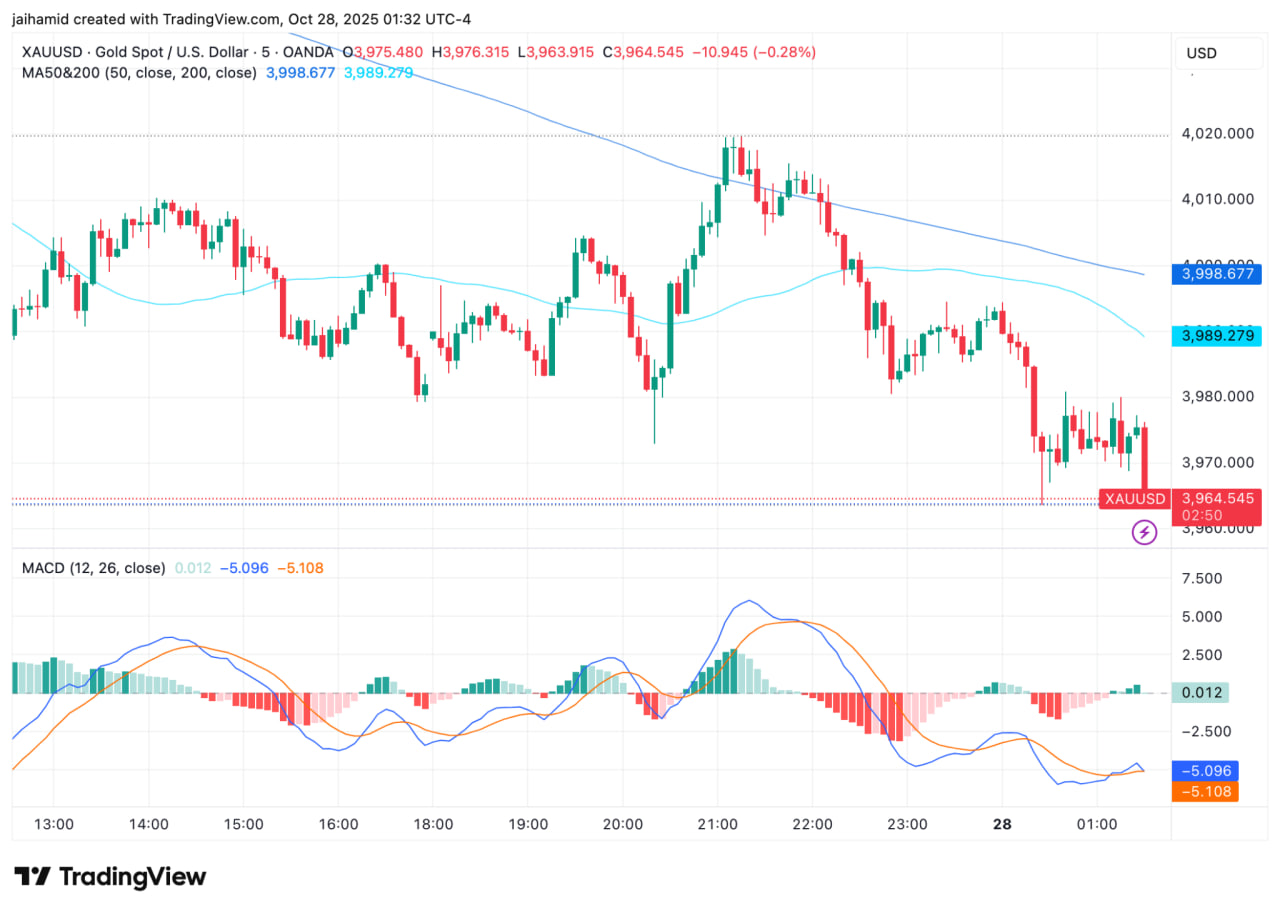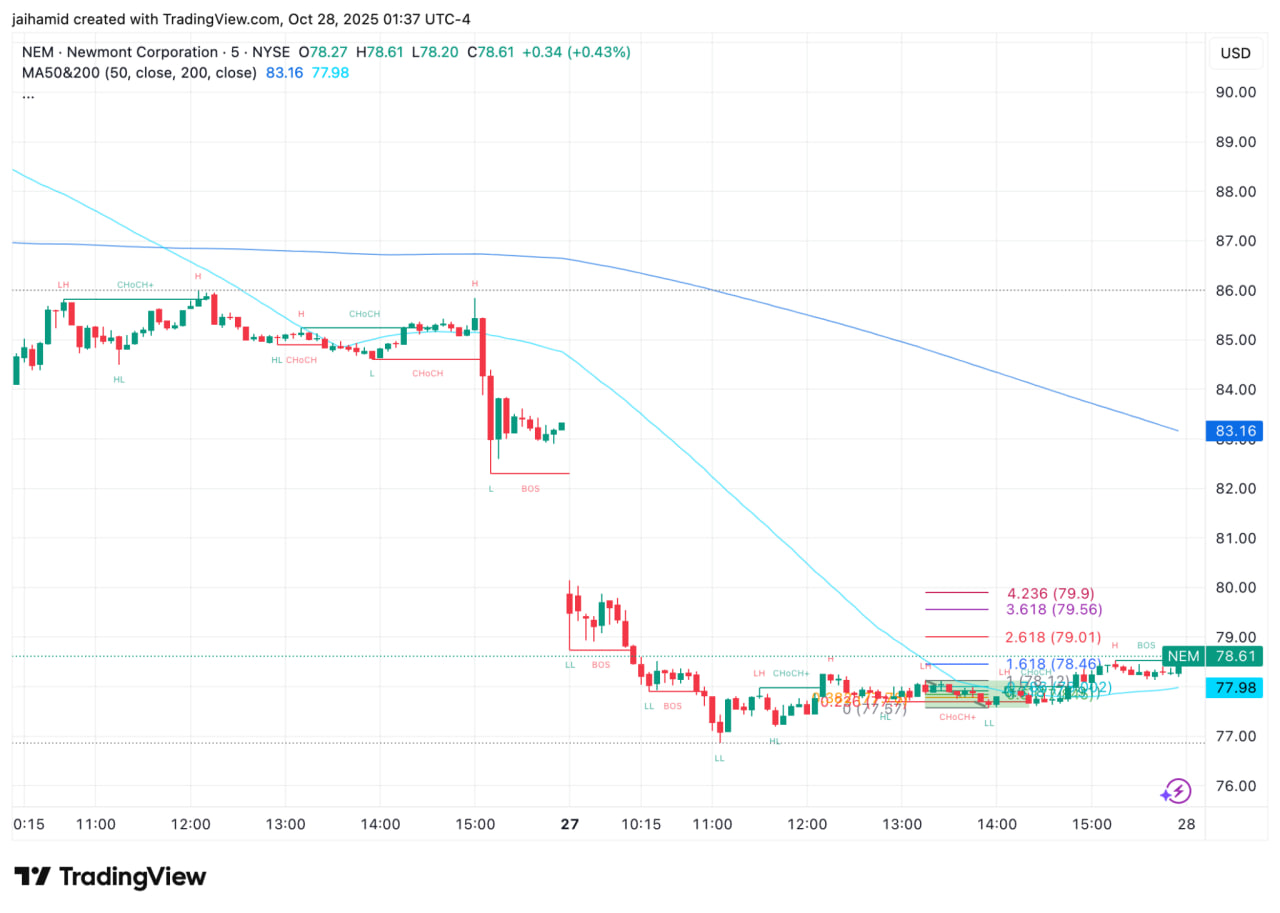After an impressive rally, gold pulled back below the $4,000 per ounce mark. Amid profit-taking and decreased investor activity, the market has entered a consolidation phase, which analysts believe could last until 2026.
Gold loses steam after record growth
Not long ago, gold was hitting new all-time highs, reaching $4,400 per ounce. However, now prices have retreated below $4,000, and traders admit: this is not a crash, but a natural pullback.
According to technical analyst Katie Stockton, both gold and gold mining stocks have entered a prolonged pause phase. She believes the gold market may remain range-bound until 2026 before a new growth cycle begins.
“This is consolidation, not a collapse,” the expert emphasizes.
Indicators signal a correction
Over the past week, gold broke through psychological support, causing the MACD indicator on the daily chart to give a clear sell signal. The short-term momentum has shifted downward, and now traders are closely watching the $3,927 per ounce level.
If the price drops lower, attention will switch to the 50-day moving average, located around $3,766. This level coincides with a technical support zone where previous reversals began.
Analysts also note that the weekly stochastic has turned down, confirming the weakening of the bullish momentum. Historically, such signals have been followed by declines lasting several weeks, and sometimes months. The upper boundary of the current range is around $4,358, which is now considered a local high.
Pressure on gold mining companies
The correction has also affected the mining sector. Shares of Newmont Corp. (NEM) — the largest gold producer — fell below the 50-day moving average for the first time in 11 months. This is considered a bearish signal for the sector.
The nearest support zone for NEM is around $75, which corresponds to the 38.2% Fibonacci retracement level. If the pressure continues, the price may test the 200-day average at around $60.
In addition, the 20-day moving average has also turned downward, indicating a weakening of short-term momentum. Analysts believe this is the result of massive profit-taking after the rapid rally, when investors pulled out billions of dollars.
The market sees the decline as a healthy pause
Despite negative chart signals, most experts do not see this as the start of a major downturn. Over the past year, gold has risen by more than 55%, and such a correction, according to Katie Stockton, was inevitable.
“The market was excessively overbought. The current decline is a natural pause before a new growth cycle,” the analyst says.
The Central Bank of the Philippines may start selling gold
While investors are watching the charts, a new debate is heating up around gold at the level of monetary authorities. At the Bloomberg Business Summit in Kuala Lumpur, former head of the Central Bank of the Philippines and board member Benjamin Diokno stated that the country’s gold reserves have become excessive.
Gold accounts for about 13% of the Philippines’ $109 billion in international reserves — noticeably higher than other countries in the region. According to Diokno, the optimal share should be between 8% and 12%, since most of the reserves were bought at around $2,000 per ounce.
“When an asset has doubled in price, it makes sense to ask: maybe it’s time to take profits? What if the price starts to fall?” he said.
Disagreements within the central bank
Diokno’s statement showed that there is disagreement within Bangko Sentral ng Pilipinas (BSP) regarding future gold policy. Current bank head Eli Remolona previously emphasized that the regulator does not speculate on price fluctuations and sees gold as a hedging asset in the reserves structure.
“It’s a risky instrument with a negative average yield. We hold it as a hedge, not as a source of profit,” Remolona said in March.
In 2024, BSP was criticized for selling part of its reserves shortly before the powerful rally began. The bank then explained its actions as active reserve management, noting that its goal is to balance risks, not to catch market peaks.
After that, the Philippines diversified the placement of its reserves: some gold is stored in France, the main share — in London. The central bank is also reviewing the currency structure of reserves, considering increasing the share of the euro, Japanese yen, and Australian dollar.
What’s next?
The current phase of gold consolidation is seen as a natural stage before a new growth cycle. If prices hold above key support levels and global central banks maintain demand for the metal, analysts expect the uptrend to return by 2026.
For investors, this means gold remains a strategic asset — not a tool for short-term profit, but a long-term hedge against market and currency risks.
Read more: The US and China agreed to avoid a trade war. The crypto market responded with growth







